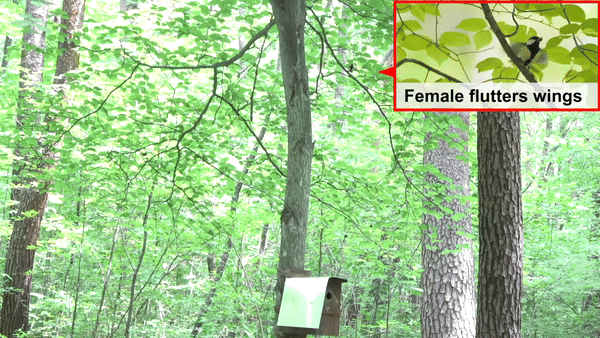"After You": The Surprising Good Manners of Some Birds

In a fascinating discovery, researchers from the University of Tokyo have uncovered that Japanese tits (Parus minor), a small bird species, use wing movements to communicate the gesture “after you.”
This finding challenges the previous notion that complex, symbolic gestural communication is exclusive to humans and great apes, significantly expanding our understanding of visual communication in birds.
Gestural Communication: Beyond Humans and Apes. Gestures like giving a thumbs-up or waving are a big part of how we communicate. At first, people thought these nonverbal cues were unique to humans. Then, they noticed great apes, like chimpanzees and gorillas, using similar gestures. Research went further and found that other animals, such as ravens and fish, also use basic gestures to point out objects or show interest. This type of gesture is called deictic gesturing. However, symbolic gestures, which require more complex thinking, were believed to be something only humans could do.

The Discovery: Researchers Toshitaka Suzuki and Norimasa Sugita from the University of Tokyo have spent over 17 years studying Japanese tits. They noticed these birds not only use specific calls but also combine them into phrases using syntactic rules, which are guidelines for structuring these calls into meaningful sequences, similar to how humans form sentences in language. This discovery sparked curiosity about their potential use of physical gestures. Observing 16 parent birds (eight pairs) during the breeding season, they found that when returning to the nest with food, one bird would flutter its wings towards its mate, prompting the mate to enter the nest first.
Implications and Future Research: The researchers plan to continue exploring the rich communication methods of Japanese tits, aiming to decode the combination of gestures and vocalizations. This research opens up new avenues in understanding animal languages and offers insights into the complexities of communication across species.
Final Thoughts: It’s not just that we are discovering more and more that animals other than humans can communicate, but also that their methods of communication are so different from what humans have developed. It is sad that as we get closer to truly appreciating all the abilities of other life forms on Earth, we are driving them to extinction by diminishing their habitats more and more. Since I was a kid, I’ve had this foreboding vision that by the time we learn to talk to all animals, every one of them will have become extinct. I know this is a bleak thought to end on, but maybe if we reflect on the widening discoveries of animal communication, human society can act more consciously and change our current environmentally destructive trajectory.


